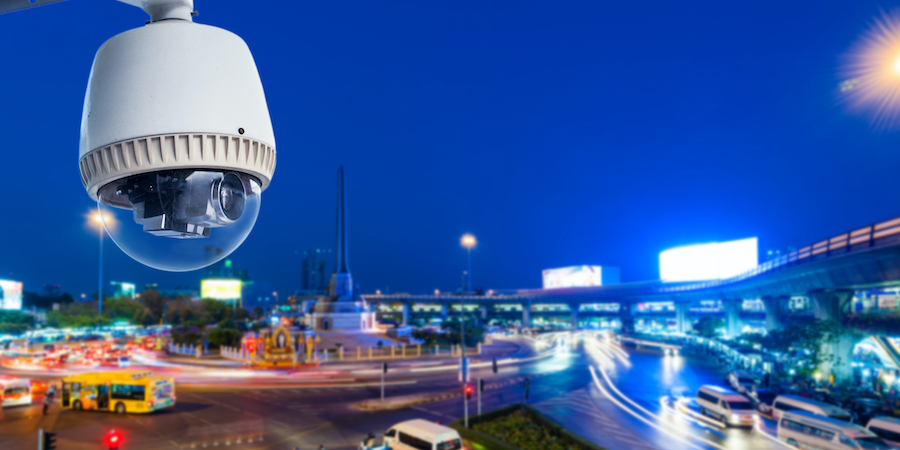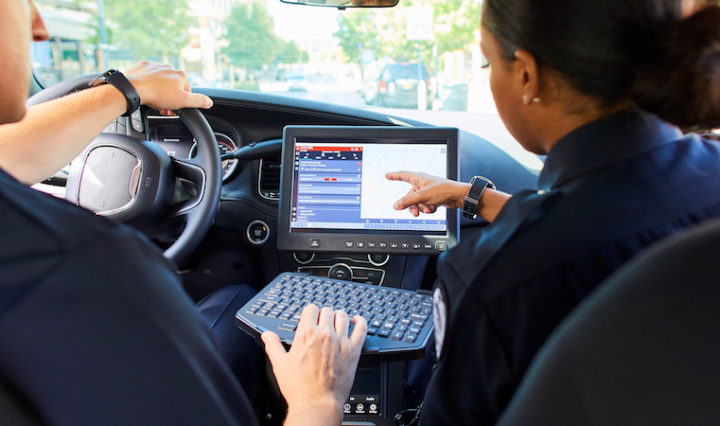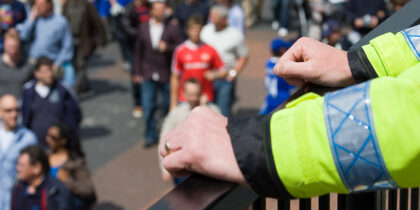Emerging technology continues to allow law enforcement agencies to achieve more and better results using fewer human resources. This is good news, given how limited funds are for public safety agencies these days.
Here are seven tech trends that law enforcement needs to watch in 2020.
1. IoT Data Sources Will Expand
When the general public talks about the internet of things (IoT), they’re often thinking of consumer devices that connect to the web to exchange information, such as self-driving cars and smart homes. In law enforcement, IoT represents the wealth of connected devices that police carry, like smartphones and tablets, body cameras, and surveillance drones, plus external data sources, such as nonpolice CCTV cameras, web-connected intrusion detection systems and security management software. These devices collectively provide more data to agencies and their officers than ever before.
How Much Can Going Mobile-First Save Your Agency?
Use our calculator to see how much you could save by leveraging Samsung DeX. Download Now
For example, IoT is gaining steam is real-time crime fighting. In public-private partnerships such as Project Green Light in Detroit, gas stations and convenience stores install high-definition cameras that stream live video to the police department. Project Green Light partners need to meet standards for lighting on their property, and they can display Project Green Light signs that help to deter crime.
In 2020 and beyond, the challenge will be to incorporate all of these IoT data sources without drowning law enforcement in too much information. Police IT managers will need to prioritize their IoT data sources prudently and not add unnecessary details that overload users.
2. More Data Will Require More Transparency
The public is keenly aware that law enforcement has access to surveillance cameras, drones and social media. This is why police departments will need to be more open with the public as to which data sources they are using, when and why.
In 2020, the range of options for surveillance will likely increase as web-connected technology proliferates. Wise law enforcement commanders will soothe public fears by making transparency a top priority. Agencies can follow the lead of New York PD and Chicago PD and use social media positively to get out front on stories involving them and to share information with the public in real time.
3. The Move to Mobile Will Continue
Mobile is the magic word for law enforcement in 2020, as ruggedized smartphones and tablets match more expensive ruggedized laptops in computing power.
The combination of 4G/LTE mobile networks and these truly portable computing devices means that police officers are no longer at a disadvantage when working in the field as they are today. While on foot, mobile-equipped officers can take notes, access departmental data, shoot photos and conduct video interviews for their investigations.
They can then plug these same devices into dashboard-mounted monitors and keyboards in their cars and access the data they’ve collected to file reports, access records and perform other functions previously reserved to laptops and mobile data terminals, thanks to Samsung DeX.
The continuing march to mobile brings more than just enhanced capabilities: Agencies also need to expand their expertise in mobile technology governance and management in order to meet the data protection requirements of Criminal Justice Information System (CJIS) and satisfy Freedom of Information Act requests.
4. Smartwatches Will Proliferate
Smartwatches have been around for a few years now, monitoring their wearers’ vital signs and making that data available to them for later review. Smartwatches are also practical communications devices that have tremendous applicability in public safety.
Agencies can deploy custom software on smartwatches that enable timely communication, such as query and response. A dispatcher can send a simple command, and the officer can acknowledge receipt with the push of a button on the watch. Communications can be silent and discreet, so an officer can receive an order or information on a suspect without using a land mobile radio (LMR) or smartphone.
Smartwatches can also support officer safety and wellness by monitoring an officer’s pulse rate and can be paired with a smartphone by Bluetooth or have independent LTE connectivity. Expect more law enforcement functions to turn up on smartwatch screens in 2020.
5. Apps Will Matter More Than Ever
Today’s smartphones and tablets have access to a wealth of apps specifically designed for law enforcement. The capabilities these apps provide today are awe-inspiring, and more capabilities are bound to become available as 2020 progresses.
For example, right now Tyler Technologies’ ShieldForce app provides police smartphones and tablets with instant access to all active calls using Google Maps; real-time locations of active police units and officers; and access to the department’s database of arrests, crash reports and crime trends. Another app, the Android Tactical Awareness Kit (ATAK), gives commanders and officers in the field increased visibility into an incident response and can integrate drone footage.
In 2020, apps like these will only get better, making mobile devices more useful to police officers than ever before.
6. Communications Barriers Will Disappear
Mobile devices combined with apps like ShieldForce, Hexagon’s Safety & Infrastructure’s Mobile Responder and Intrepid Networks’ Intrepid Response are tearing down the barriers between field officers and dispatch. Everything that can be seen on a computer screen at headquarters is now available to all officers, no matter where they are. This includes real-time situational awareness data such as suspect and officer locations, and vital data such as criminal records, license plate registrations and building layout plans.
At the same time, dispatch can now know where all of its officers are by monitoring GPS location data sent by their mobile devices and keep watch on developing situations by having these same officers livestream video from the incident scene.
Collectively, these tech-driven trends are integrating dispatch, headquarters staff and officers in the field into an interactive unified team. As more law enforcement agencies embrace mobile in 2020, the effectiveness of policing as a whole will continue to improve.
7. 5G Will Enhance Mobile Solutions
The rollout of 5G mobile networks is well under way in the U.S. Current 4G/LTE networks can support streaming video, but can run into network “traffic jams” and other delays. Being able to move data up to 100 times faster than 4G means 5G networks won’t run into these problems — and they’ll be able to put much more connectivity and functionality into users’ hands.
We’ve seen the power of mobile devices to reshape industries. Do people still carry separate consumer-grade cameras, digital music players and video camcorders with them? They don’t, because smartphones now perform all of these functions for them. Serving as personal computing hubs is merely the next logical step for mobile devices in law enforcement, and access to and uses for this ability will continue to expand in 2020.
Discover more ways Samsung is supporting current and future trends of mobile first responders. Find out how the advancing capabilities of wearables can improve public safety officers’ efficiency in this free white paper.








